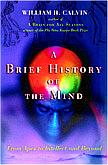|
 Coming
on stage now is a stunning example of how civilization must rescue
itself. It dwarfs the three big scientific alerts from the 1970s
about global warming, ozone loss, and acid rain. But until the 1990s, no
one knew much about abrupt climate change, those past occasions
when the whole world flipped out of a warm-and-wet climate like today’s
into the alternate mode, which is like a worldwide version of the
Oklahoma Dust Bowl of the 1930s. There are big alterations in only
3-5 years. A few centuries later, the drought climate flips back
into worldwide warm-and-wet, even more quickly. Unlike greenhouse
warmings, the big flips have happened every few thousand years on
average, though the most recent one was back before agriculture in
10,000 B.C. The next flip may arrive sooner than otherwise, thanks
to our current warming trend. The northern extension of the Gulf
Stream appears quite vulnerable to global warming in four different
ways. An early warning might be a decline in this current.
And according to two oceanographic studies published this last year,
this vulnerable ocean current has been dramatically declining for the
last 40-50 years, paralleling our global warming and rising CO2. Coming
on stage now is a stunning example of how civilization must rescue
itself. It dwarfs the three big scientific alerts from the 1970s
about global warming, ozone loss, and acid rain. But until the 1990s, no
one knew much about abrupt climate change, those past occasions
when the whole world flipped out of a warm-and-wet climate like today’s
into the alternate mode, which is like a worldwide version of the
Oklahoma Dust Bowl of the 1930s. There are big alterations in only
3-5 years. A few centuries later, the drought climate flips back
into worldwide warm-and-wet, even more quickly. Unlike greenhouse
warmings, the big flips have happened every few thousand years on
average, though the most recent one was back before agriculture in
10,000 B.C. The next flip may arrive sooner than otherwise, thanks
to our current warming trend. The northern extension of the Gulf
Stream appears quite vulnerable to global warming in four different
ways. An early warning might be a decline in this current.
And according to two oceanographic studies published this last year,
this vulnerable ocean current has been dramatically declining for the
last 40-50 years, paralleling our global warming and rising CO2.

•This
is the best pamphlet-sized treatment on the new scientific
warnings.
–Use
the link to the PDF file at WHOI and print out a supply for
your classes.
The best book-sized
treatment of the science of ancient climates is Richard Alley's
The Two Mile Time Machine (Princeton 2000).
My human evolution book A Brain for All
Seasons devotes the last third to climate influences
and to warnings about future abrupt climate shifts.
It is
written at approximately the same level (for serious but
nonscientific readers) as my Atlantic Monthly cover
story, "The great
climate flip-flop."

 |
Is
the Temperature Rising? The Uncertain Science of Global Warming
by S. George Philander (Paperback ).
Written with grace and understatement for general readers, by
someone deeply involved with modeling the climate, it covers much of a
Princeton introductory course in the earth sciences.
The
IPCC analysis of where gradual climate change is going, “Climate
Change 2001: The Scientific Basis,” can be found at http://www.ipcc.ch
|
Floods,
Famines, and Emperors : El Nino and the Fate of Civilizations
by Brian Fagan. Paperback (March 2000.)
Archaeologists
have this wonderful perspective on what’s gone wrong in the past, both
with climate and human institutions.
 |
The
Two-Mile Time Machine
by Richard B. Alley (Princeton
University Press, 2000). It
is written for nonspecialists (Alley has gotten a lot of practice as a
frequent commentator for Science news articles).
The book contains far more detail on abrupt climate change than
the others.
So if you find yourself asking, “But how could they possibly
know that?” you’ll find most of the answers in Alley’s excellent
book.
Its final chapter about the future, alas, is informed by
conventional economic extrapolation rather than by the more relevant
perspective of high-risk management seen in medicine, re-insurance,
and disaster planning.
|
The Virtual Index for my books and articles,
far better than my printed index in most cases:
And my favorite source for looking up
other authors' books (and who has quoted them):
|

A Brief History
of the Mind, 2004

A Brain for All Seasons
2002

Lingua ex Machina
2000

The Cerebral Code
1996

How Brains Think
1996

Conversations with
Neil's Brain
1994 |









